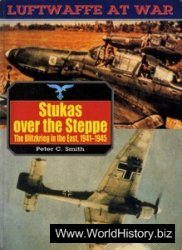Chukai Shonin was Honmyokai’s nephew (Hijikata, 1996; Matsumoto, 2002). He was born in 1697, almost 14 years after his uncle’s death, and he joined the seminary at Churen Temple at a young age, most likely influenced

The mummified remains of both Chukai and Enmyokai, located at Kaiko Temple in Sakata, Yamagata Prefecture.
By his uncle’s famous deeds. Born into the samurai caste, his secular name was Togashi Joyueimon, and he grew up in Toriyamachi, Tsuruoka.
Chukai studied intently at Churenji, and he eventually became head priest at the temple, like Tetsumonkai and Enmyokai had before him.40 While pursuing his religious education and ascetic training at the temple, he probably visited Honmyoji on a regular basis. From Churenji, it takes approximately two hours to walk over a small mountain and down into the small village of Higashiiwamoto, where Honmyo Temple is found. Upon entering the village, the temple is up a hill on the right hand side.
Chukai, who considered his uncle a Living Buddha, would have traveled to the temple to pray in front of his mummified body often, and it was most likely due to his uncle’s influence that he eventually decided to mummify himself. Before dying, Chukai traveled to Sakata in order to restore a temple that had once flourished in the area but was then in a state of disrepair. The temple was known as Gyonindera, and its legendary creator was Kukai, the founder of Shingon Buddhism in Japan, and the man whom all

Of the issei gyonin followed. It is said that he built this temple over 1,150 years ago. Chukai decided to restore this historical site, and he traveled to Sakata to begin work. Once completed, the temple was called Kaikoji. It still exists today on a hill overlooking Sakata City and the Mogami River, though repairs were necessary after an earthquake destroyed part of it in 1894. Besides the main temple, there is a bell tower, the Awashima Kannon Temple, and a sokubutsudo, where the bodies of both Chukai and Enmyokai are enshrined.
Chukai Shonin (Kaikoji, Sakata-shi). Following the exam-

Path leading up a hill toward Honmyoji, where the body of Honmyokai Shonin rests.
Ple set by his uncle Honmyokai, Chukai began the training necessary to prepare his body for mummification. He secluded himself at the Swamp of Wizards in 1753, and he began abstaining from cereals, eating only a few nuts daily in order to remove fat and moisture from his body. The site chosen for his burial is unknown. Some sources state that it was within the Swamp of Wizards, while others state that he was buried within the precincts of Kaikoji.
When he approached death, a stone crypt was constructed three meters underground. He stepped into a wooden coffin. He was sealed inside, and the coffin was lowered into the burial chamber. A bamboo breathing tube was in place, and Chukai Shonin continued to recite mantras and prayers in darkness until his death at the age of 58, in February 1755. Once his prayers could no longer be heard, he was dug up to confirm that he had died, and then reburied for three years and three months before being enshrined in a special temple hall.
Seated beside Chukai is Enmyokai Shonin (Hijikata, 1996; Matsumoto, 2002). Sakurai et al. (1998) describe the condition of his remains:
The body parts are brittle but thicker than those of the other mummies. The body has also kept its original shape better than the others, though the lower part is not well preserved. The skin is atrophied, and there is no sign that the
Brain or viscera were extracted. The area from the right cheek to the upper lower lips has been mended, and the surface is painted brown, as is the rest of the body. The upper and lower limbs were painted black-brown (presumably with persimmon tannin) after being tied with twine in several places at a right angle to the axes. As the body had possibly been smoke dried first, it was undoubtedly painted during the second treatment. X-rays show the closure of the principal sutures of the skull to be almost complete. There is a slight dental

Enmyokai Shonin (Kaikoji, Sakata-shi).
Attrition. Enmyokai is said to have died at age 55. The vertebral column is highly kyphotic and has the shape of a bow. The body is 164.7 cm tall and weighs 6.8 kg. X-ray examination shows spondylosis in the thoracic and lumbar vertebrae. Both the 12th thoracic and the first lumbar vertebrae, constituting the apex of kyphosis, have been deformed in a wedge shape. In the hip joints, osteoarthritis is seen, but there is no sign of osteoporosis. Because of its corpulence it is believed that the body became mummified after it had decomposed [p. 320].
Enmyokai was born in 1767 in Amarume, Yamagata. His secular name is unknown, but his father was Sato Rokubei. He was an ascetic of the Haguro sect of Shugendo, which was a rival of the Yudono sect. One day, he met Tet-sumonkai Shonin, from Churen Temple, and became his disciple, apparently impressed by the virtue and commitment displayed by Tetsumonkai. While a member of the Haguro sect, Enmyokai wrote a book called Isseikaigo no koto, but upon converting to the Yudono sect, he was considered a traitor, and the text was not preserved.
Enmyokai accompanied Tetsumonkai as he traveled from town to town, teaching people about Buddhism, from 1804 to 1829. He may have witnessed Tetsumonkai cut out his own left eye while praying for the cessation and cure of eye illnesses in Edo. This display of selflessness may have forced Enmyokai to consider that the body is only matter, and is not the true self. He decided to self-mummify, and he began intensive ascetic practices at the Swamp of Wizards. According to hagiographies, at the end of this period of severe austerities, he was in a condition comparable to being half-dead and half-alive : a transient state between two worlds (Hijikata, 1996).
Wishing to enter nyujo near Kaiko Temple in Sakata, he traveled by horse from the Swamp of Immortals to Kaikoji in northern Yamagata Prefecture. Feeling that his body and mind were prepared for his final interment, he buried himself alive on May 8, 1822, seven years before his teacher Tet-sumonkai did the same. He was 55 years old at the time.
After the bodies of both Chukai and Enmyokai were disinterred, they were carried to the back room of Churen Temple, where they were dried with charcoal fires and incense fumes, and then lacquered (with kakishibU) before being enshrined in the mummy hall of Kaiko Temple.41 This technique, rarely found in Japanese historical accounts, is called kunseiho in the Japanese language (Matsumoto, 2000). It was a Chinese technique of preserving the already mummified remains of Chan3 masters and other Buddhist priests in China. This technique was only used on these two self-mummified individuals in Japan, though variations may have been utilized on both Tetsumonkai and Tetsuryukai.




 World History
World History









